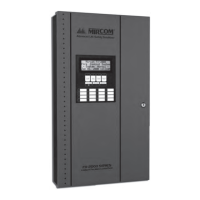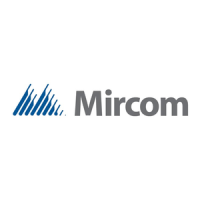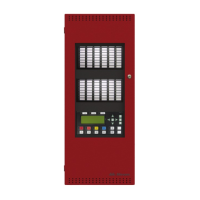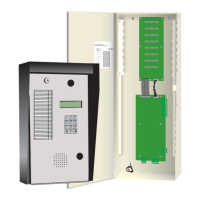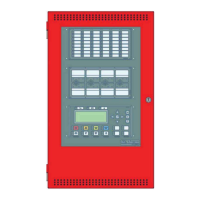Operating Conditions
88
Trouble List
When a trouble condition is first annunciated, the Display Trouble LED blinks, the panel buzzer starts to sound in a slow tempo and
the LCD displays a message describing the Trouble.
• Read and acknowledge the trouble message or messages by pressing the Acknowledge push button once for each trouble
message.
• To get more detailed information press and hold the More push button.
• Investigate the trouble and take the appropriate corrective action. Press Reset to clear the trouble.
• Press Acknowledge to remove the trouble from the system's event list.
•
This section contains a list of PRO-2000 Trouble messages.
Some trouble messages could mean that an entire area is no longer monitored by the system.
All Devices
Controlling I/O Card Failed
An I/O Card fails or is missing. The system indicates a trouble for each device attached to that
card. This is to remind users that there is no protection in the area monitored by that card.
MPU Device
Hardware Trouble General error message for all devices.
Communication fault General communication trouble.
ADI Device
Relay OFF
Device OUTPUT set to ON and the device return value indicates the OUTPUT is OFF. Verify
this device, it is not changing state.
Relay ON
Device OUTPUT set to OFF and the device return value indicates the OUTPUT is ON. Verify
this device, it is not changing state.
Wrong Device
Device present at the specified address (refer to device ID) is not consistent with the
information.
Class A Class A fault detected on a monitor module.
Compensation Device is not able to compensate.
Not Reached
The device located at the specified address (refer to device ID) had not been configured due to
an earlier error (short-circuit, cable break, wrong device on the line).
Setpoint Too Low The normal value of the detector located at the specified address (refer to device ID) is too low.
Setpoint Too High
The normal value of the detector located at the specified address (refer to device ID) is too
high. This either means that the detector is dirty and needs cleaning or that a fire has been
detected while the system is being powered up.
Collision
More than one detector is responding to a single address. This condition usually indicates an
address conflict.
Supervision
Device located at the specified address (refer to device ID) does not have an end-of-line (EOL)
supervision resistor.
Short-Circuit
A short-circuit has been detected on a detector/module. To locate the faulty detector/module
refer to device ID.
Line Break
A cable break has been detected on a detector/module. To locate the faulty detector/module
refer to device ID.
Bad Device
Indicates that a communication fault was detected while communicating with an addressable
device. This condition usually indicates a bad line.
SO Device
Supervision
Device located at the specified address (refer to device ID) does not have an end-of-line (EOL)
supervision resistor.
Internal Hardware
Device located at the specified address (refer to device ID) has an internal hardware problem.
The relay is latched in an open position when requested to close.
Table 32a: Device Trouble
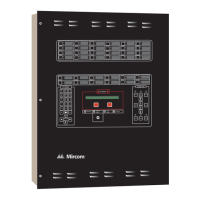
